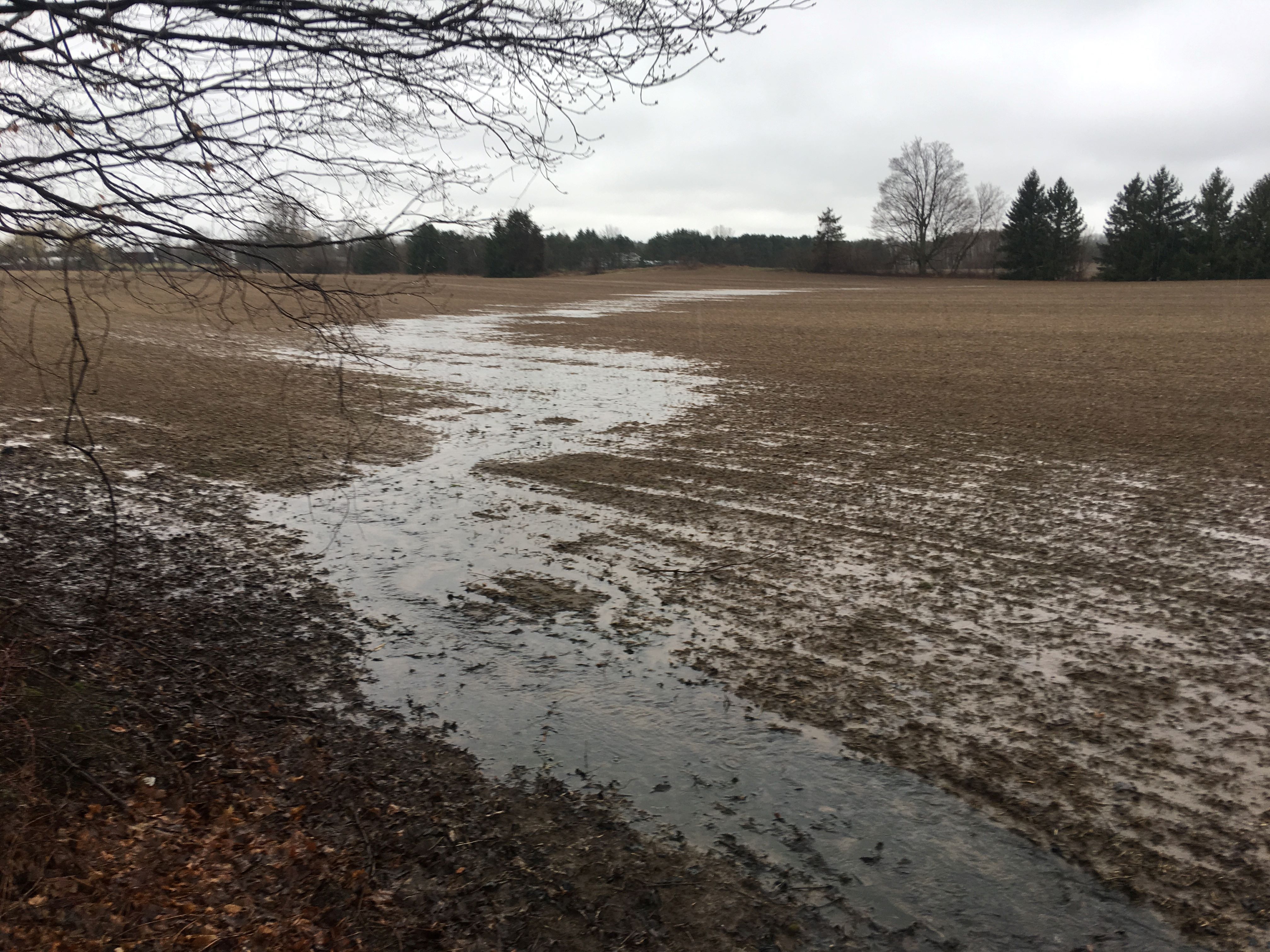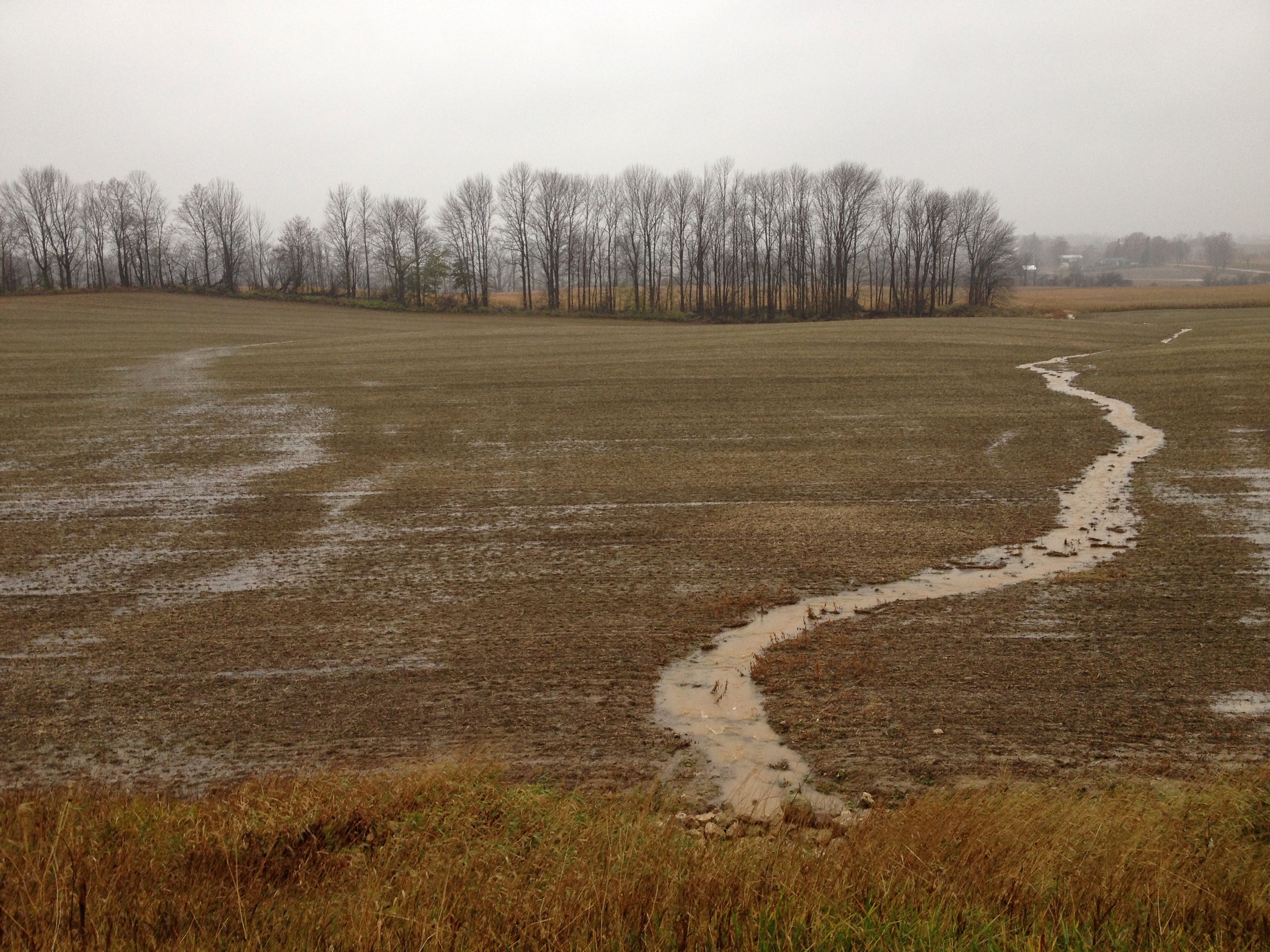Surface water and drainage disputes
Learn about the flow of surface water and the right of drainage.
Introduction
Surface water naturally flows downhill using whatever path it chooses. It may move as sheet flow, or flow through small rivulets or surface runs. Surface water does not flow in a defined channel of a natural watercourse.
The courts have indicated the flow of uncollected surface water onto an adjoining property is not grounds for a lawsuit. However, the courts have also ruled that a lower property or downhill owner can protect their property from surface water flow by building berms or dykes, provided these are built on the lower property owner's property.
Surface water
There only types of flowing water are surface water and watercourses. If water does not meet the definition for a watercourse, if litigated, a judge may decide that it is surface water. Usually, this is water that flows without a defined channel.
Surface water includes water that moves as a sheet across the surface of the land (Figure 1). It also includes private artificial systems constructed to collect surface water such as ditches, pipes and eavestroughs. Surface water does not include municipal drains or award drains. These systems have been constructed under statute law.
Surface water can be easy to distinguish from a natural watercourse (Figure 1), but sometimes they can be difficult to distinguish (Figure 2).

Source: Dietrich Engineering Ltd., Kitchener, Ontario

Natural flow of surface water
Surface water may naturally flow across the ground and even form channels in the ground. Do not assume that all flowing water is a watercourse. The courts can treat surface water and watercourses very differently.
The courts have indicated that a lower property owner has the right to protect their land from surface water flowing onto them from a higher property owner. Therefore, your neighbour may have the right to block this flow.
Collected surface water
Surface water naturally flows downhill using whatever path it chooses. If someone concentrates the flow of surface water, this water is called collected surface water.
If you collect surface water, you have an obligation to discharge that water where it will not cause problems to downstream property owners. If the discharge of collected surface water causes problems or damages on downstream properties, this could be grounds for a legal action.
Examples of collected surface water:
- artificial ditches
- drainage from eavestroughs and downspouts
- water collected from the roofs of greenhouses
- discharge from storm water management ponds
- street curbs and gutters
- agricultural tile drainage systems
- road crossings
Right of drainage
If a landowner collects and directs surface water on lower land continuously, openly, peacefully, without being contested and without permission for 20 years, the landowner may have acquired a right to drain the water onto the lower land. Once a landowner obtains a prescriptive right, they cannot alter it. For example, usually the landowner may not increase the amount of water that is flowing through to the neighbouring property or the boundaries of the drainage.
This right continues despite changes in property ownership for both landowners.
The time period to establish the right is specified by the Real Property Limitations Act, 1990.
While a person can claim a right of drainage, that right does not exist until legal action is taken and the courts have ruled the prescriptive right of drainage exists.
The courts have also indicated a right of drainage exists for the conditions that created the prescriptive right. If the conditions are altered resulting in increased flow, the right of drainage may be lost.
Example
A road crossing has drained onto the adjoining property for over 20 years and a right of drainage could be claimed. Recently, 2 new lanes were added to the road and now an increased quantity of water flows through the culvert onto the adjoining land. The right of drainage may have been lost.
A lower property owner has the right to protect their property from collected and uncollected surface water. The neighbour's act of collecting the surface water may trigger a liability.
To resolve the situation, you can:
- initiate discussion with your neighbour to solve the problem (the solution could be formalized with a mutual agreement drain)
- petition for a municipal drain to resolve the drainage problem
- seek legal advice
Blocking surface water
The courts have ruled that a lower property owner has the right to protect their land from surface water flowing onto them from a higher property owner. Landowners may not enter their neighbour's land to block the flow but can take measures to block it on their own property.
Be careful if you are considering this option. Although the courts have generally indicated that lower property owners have this right, legal action may still be initiated against the lower property owner that blocks the flow of water. Seek legal advice before implementing this option, particularly if you are considering blocking surface water flow that originates from a road.
If surface water flow is blocked, the higher property owner can petition for a municipal drain forcing a drainage system through the blockage and across your land. Blocking the flow of water may not be a practical way to resolve the problem.